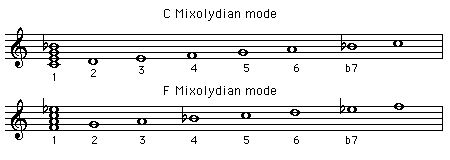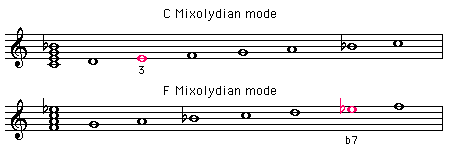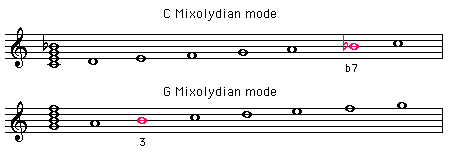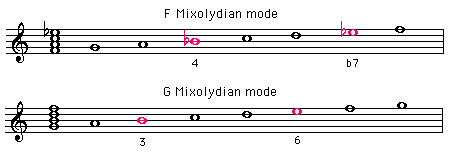(Down - Up - Top)
Im 5.4 - Critical Tones
Let us compare the C- and F-Mixolydian modes for the Blues in C.

A practical person might say :
"Look, both scales have the C D F G A and Bb in common. I will stick with
these notes for my improvisation over all the C7 and F7 chords
and don't have to worry about anything else."
This is true, but it ignores the essential point of improvisation, which is
to reflect the chord changes in your improvisation !
You should identify the notes that are different from one scale to the next and focus on those in your improvisation.
Going from the C- to the F-Mixolydian mode or vice versa these (what I call) critical tones are the E and Eb.

Going from the C- to the G-Mixolydian mode or vice versa the critical tones are the Bb and B.

Going from the G- to the F-Mixolydian mode or vice versa the critical tones are the B to Bb, and E to Eb.

Therefore in an entire Mixolydian Blues chorus there are only two notes that change.
For the Blues in C : E - Eb and Bb - B
You can easily identify these notes for the blues in any key, for they are the 3rd and b7th of the I chord.
The 3rd is flattened and the b7th is raised :

For the Blues in F the Critical tones are :
